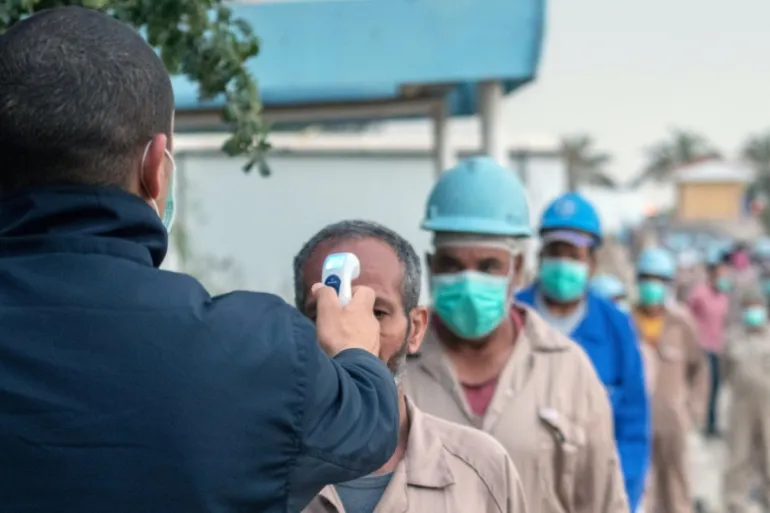In 2020, Qatar was hit hard by the coronavirus pandemic (COVID-19), experiencing one of the highest rates of infections per capita in the world. The Qatari government quickly intervened to curb the spread of the virus through measures such as testing, contact tracing, social distancing, and the closure of unnecessary business activities. While these measures helped mitigate the virus, Qatar also implemented measures which in theory were to slow infection rates but in practice, severely restricted migrant worker rights and ultimately led to higher infection rates.
In March 2020, after Qatar recorded 239 cases of COVID-19, it established a ‘cordon sanitaire’ exclusively for migrant workers – an isolated quarantine zone – around the area of Doha and entitled it ‘the Industrial area’. Migrant workers were confined to cramped worker barracks in between cement factories, warehouses, and equipment sheds while the government set up roadblocks and built concrete barriers to mark the zone’s boundaries. Migrant workers were not permitted to leave the zone for any reason, including seeking out medical care, except for transportation to construction sites to work on projects such as the stadium for the World Cup 2022.
Although the Qatari government justified the cordon sanitaire as a measure to reduce coronavirus transmission, the conditions within the zone facilitated a rapid spread of infections. Workers were housed in overcrowded dormitories, with 6 to 12 persons per room on bunk beds, with no ventilation and poor sanitary conditions. When taken to the construction sites, they worked in extremely close physical proximity with thousands of other workers resulting in an even faster spread of the coronavirus. Although the exact number of cases within the zone is still unknown as testing primarily occurred outside the locked-down area, the government acknowledged that most cases were concentrated in the Industrial Area.
Therefore, the measure not only failed to curb the spread of COVID-19 but also exacerbated infection rates. This raises the question: Why would Qatar implement measures that not only ignore the rights of migrant workers but also contribute to the spread of COVID-19?
The answer lies in Qatar’s goal of separating migrant workers from the rest of society; how diseased they become is essentially irrelevant to the Qatari government as long as they have been separated. Therefore, the measure was not implemented as a means of disease control but rather to map out zones to divide citizens from migrant workers, or in the words of the Qatari government, to divide professional white-collar skilled employees from unskilled manual laborers. The measure was built on and facilitated by the existing kafala system in Qatar which ties migrant workers to their employees, granting employees control over workers’ ability to enter, reside, work, and in the case of Qatar, exit the host country. The implementation of a cordon sanitaire further strengthened this inequality between employees and workers and showed which one of them was more deserving of basic health and care.
To prevent migrant rights violations, the main issue which must be addressed is the kafala system. Establishing a standard level of equality between employees and migrant workers is essential. Otherwise, the Qatari government may exploit an already dire pandemic situation to further marginalize migrant workers. To attain this goal, it is crucial to involve migrant workers, who make up 85% of the population and contribute significantly to Qatar’s economic prosperity through their continuous dedication, in policy-making decisions. This inclusion ensures their voices are heard and their rights are protected.

